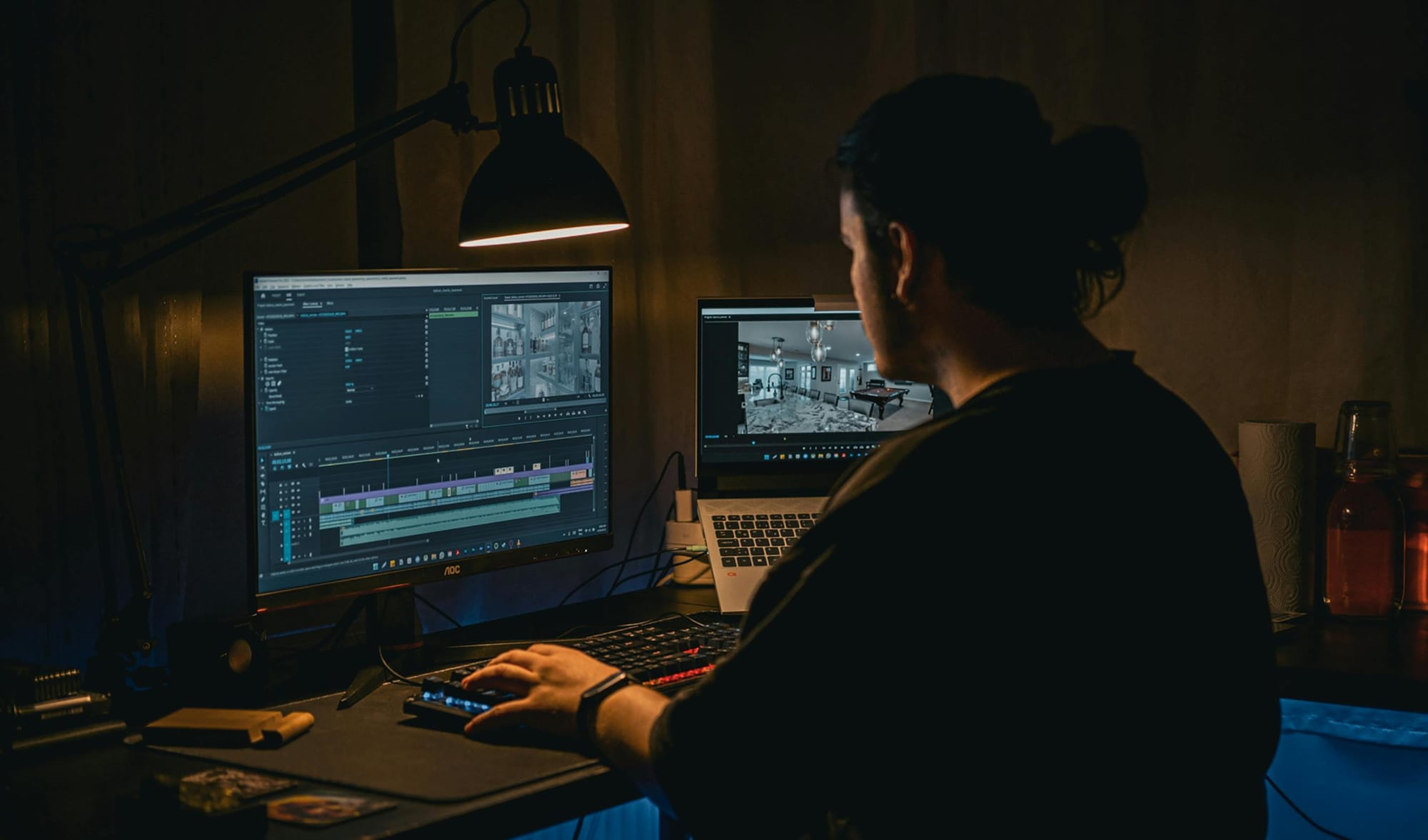Managing Remote Video Editors: Tips for Overcoming Distance Challenges
In today's digital age, managing remote teams has become a norm rather than an exception.


Key Takeaways:
- Establish clear communication channels and schedules to mitigate time zone differences.
- Leverage project management tools like Trello to keep everyone aligned on tasks and deadlines.
- Use cloud-based storage solutions such as Google Drive to ensure seamless access to video files.
- Incorporate video conferencing tools like Zoom for regular face-to-face interaction and feedback.
- Foster a sense of team culture despite the distance to maintain high morale and collaboration.
In today's digital age, managing remote teams has become a norm rather than an exception. One area where this trend has particularly taken off is in video production. Managing remote video editors can be challenging, but it is also an opportunity to leverage diverse talent from across the globe. In this blog post, we will explore effective strategies for managing remote video editors.
One interesting fact about remote video editing that isn't widely known is that remote video editors tend to be more productive than their in-house counterparts. A study by Airtasker found that remote workers take fewer breaks and are 14% more productive than office-based employees. This can be a significant advantage for video production teams looking to maximize output and efficiency.
This blog will provide actionable tips and recommend key software tools to ensure smooth and productive remote video editing workflows.
1. Establish Clear Communication Channels
Effective communication is the cornerstone of any remote working relationship. For managing remote video editors, it's crucial to establish clear communication channels and schedules.
Set Regular Check-ins: Schedule daily or weekly video calls to discuss progress, address any concerns, and plan upcoming tasks. This helps in maintaining a personal connection and ensures everyone is on the same page.
Use Communication Tools: Slack is a powerful tool for team communication. Create different channels for various projects or topics to keep discussions organized. Slack also allows for quick, real-time messaging, which is vital for resolving issues promptly.
Document Everything: Use shared documents on Google Drive to maintain records of discussions, decisions, and project plans. This ensures that everyone has access to the same information, reducing misunderstandings.
2. Leverage Project Management Tools
Keeping track of tasks, deadlines, and progress is essential when managing a remote team. Project management tools can help you stay organized and ensure that everyone knows their responsibilities.
Trello: This user-friendly project management tool uses boards, lists, and cards to organize tasks. Assign tasks to specific team members, set due dates, and attach relevant files. Trello’s visual interface makes it easy to see the status of each task at a glance.
Asana: Another excellent project management tool, Asana allows for more detailed task management. Create projects, assign tasks, set deadlines, and track progress. Use Asana’s timeline feature to map out project timelines and ensure that all tasks are aligned with the overall project goals.
Monday.com: This tool provides a highly customizable interface where you can create workflows tailored to your team’s needs. Track progress, assign tasks, and use various templates to streamline project management.
3. Use Cloud-Based Storage Solutions
One of the biggest challenges in remote video editing is managing large video files. Cloud-based storage solutions enable seamless access and collaboration on video projects.
Google Drive: A reliable and widely-used cloud storage solution, Google Drive allows you to store video files and share them with your team. Use Google Docs and Sheets for collaborative scriptwriting and project planning.
Dropbox: Another popular choice, Dropbox offers robust file synchronization and sharing capabilities. Create shared folders for each project, and use Dropbox Paper for collaborative note-taking and project documentation.
WeTransfer: For sending large video files, WeTransfer is a great option. It allows you to send files up to 2GB for free, or larger files with a premium account. Use WeTransfer to quickly share rough cuts or final edits with your team.
4. Incorporate Video Conferencing Tools
Regular face-to-face interaction is crucial for maintaining a strong team dynamic and providing effective feedback.
Zoom: This widely-used video conferencing tool is ideal for team meetings and one-on-one check-ins. Use Zoom’s screen sharing feature to review video edits in real time and provide detailed feedback. Record meetings for future reference and to share with team members who couldn’t attend.
Microsoft Teams: Integrating seamlessly with other Microsoft Office tools, Teams offers robust video conferencing features. Use Teams for regular project meetings and to collaborate on documents during calls.
Google Meet: If your team already uses Google Workspace, Google Meet is a convenient option for video conferencing. Schedule meetings directly from Google Calendar and use Google Meet’s integration with other Google tools for a streamlined workflow.
5. Foster a Sense of Team Culture
Maintaining a strong team culture is vital for remote teams. This can help in boosting morale, increasing collaboration, and reducing feelings of isolation.
Virtual Team Building Activities: Organize virtual team building activities such as online games, virtual coffee breaks, or themed video calls. These activities can help in creating a sense of camaraderie and make team members feel more connected.
Celebrate Achievements: Recognize and celebrate team achievements, whether it’s completing a project or an individual’s outstanding contribution. Use tools like Slack or email to publicly acknowledge successes.
Regular Feedback and Support: Provide regular feedback and support to your team members. Make sure they know that their efforts are valued and that you’re there to help with any challenges they may face.
FAQ
Q: How can I manage different time zones effectively?
A: Use tools like World Time Buddy to find overlapping work hours. Schedule meetings during these times and use asynchronous communication tools to ensure everyone stays informed and can contribute regardless of their time zone.
Q: What is the best way to share large video files?
A: Cloud-based storage solutions like Google Drive and Dropbox are ideal for sharing large video files. For quick transfers, WeTransfer is an excellent option for sending files up to 2GB for free.
Q: How can I ensure that my remote team feels connected and motivated?
A: Regular video calls, virtual team-building activities, and celebrating achievements can help in maintaining a strong team culture. Provide consistent feedback and support to show your team that their work is valued.
Q: Which project management tool is the most effective for video editing teams?
A: Trello is great for its visual interface, Asana offers detailed task management, and Monday.com provides customizable workflows. Choose the one that best fits your team’s working style and project requirements.
Managing remote video editors effectively requires a combination of clear communication, efficient project management, and a collaborative approach. By following the steps outlined in this guide, you can overcome the challenges of distance and build a productive and motivated remote team.
Vimerse is a video editing agency for content creators and marketing agencies. We offer fast video editing at a price you'll love. We edit videos for YouTubers & Tiktokers with 10M+ subscribers. Get the best video editing services and grow your channel.